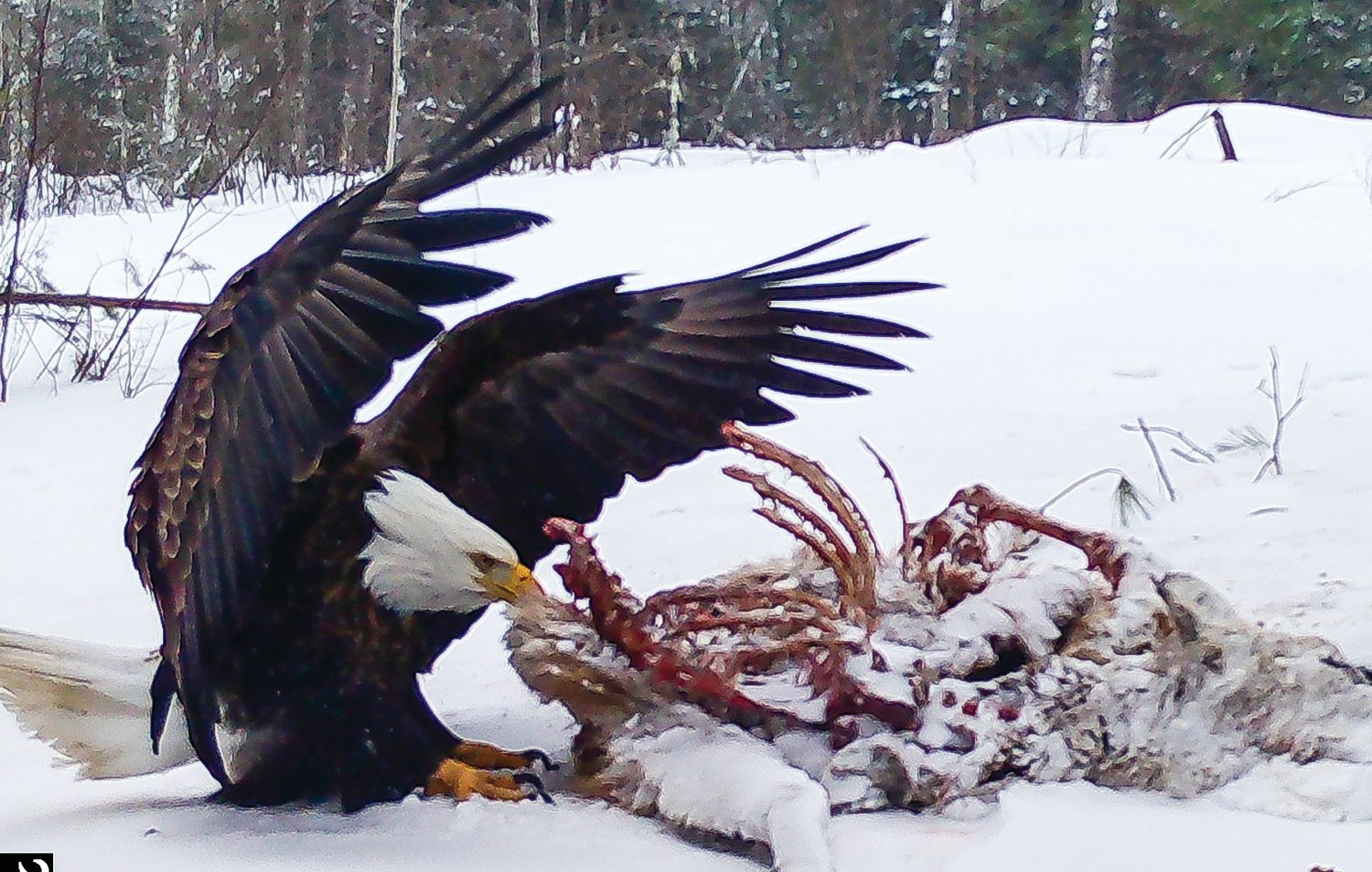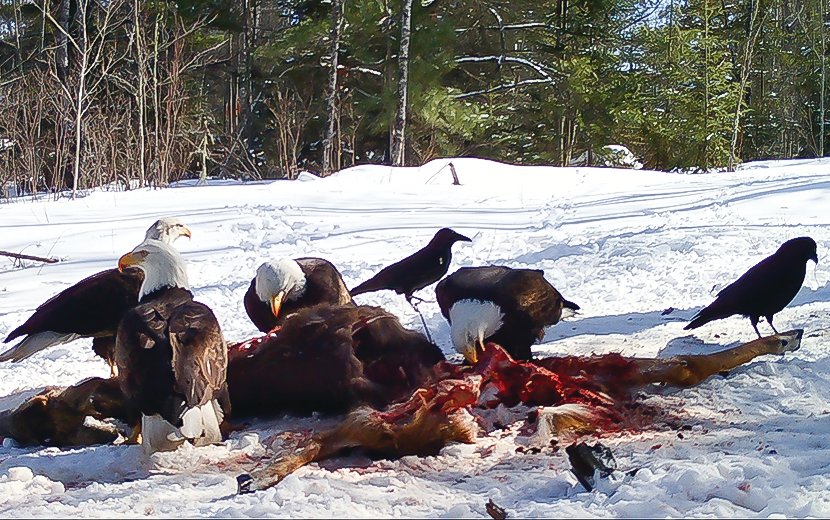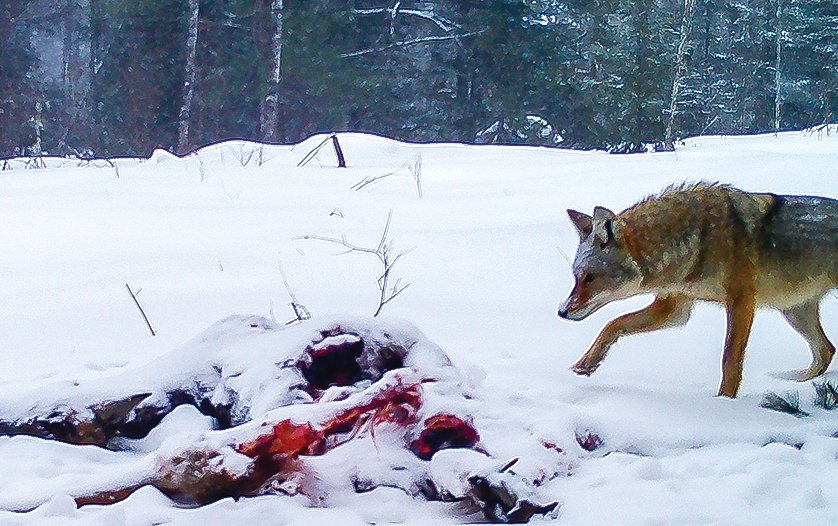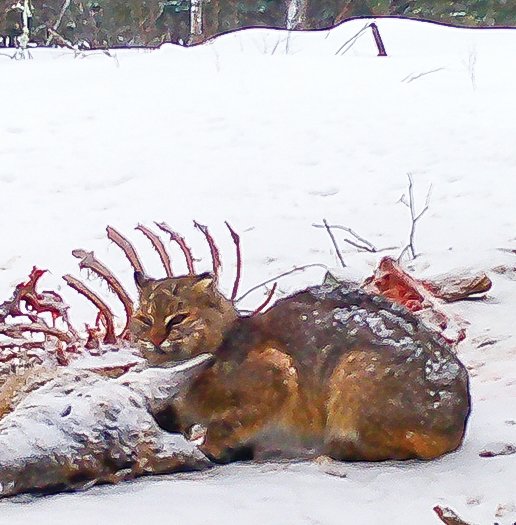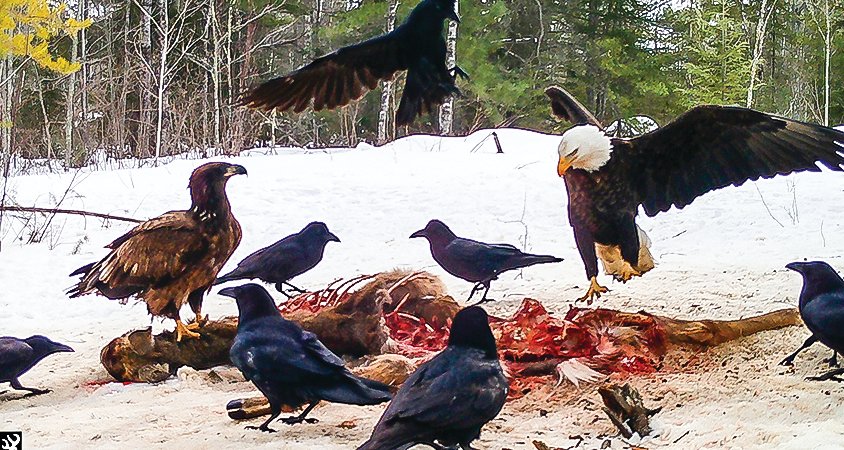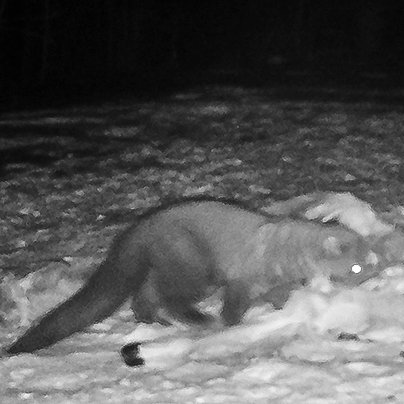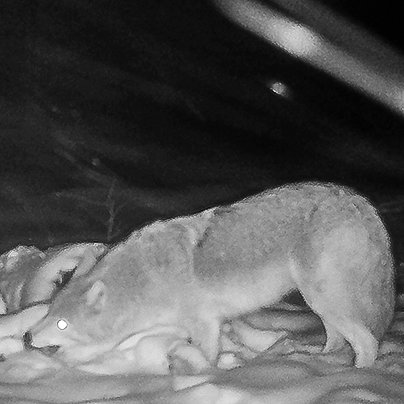Support the Timberjay by making a donation.
Trail cam tells the tale
The blood on my snowshoe trail the other day, right behind our house, was the first clue that something had happened overnight. By the time I saw it, our dog Loki was already a step ahead of …
This item is available in full to subscribers.
Attention subscribers
To continue reading, you will need to either log in to your subscriber account, or purchase a new subscription.
If you are a current print subscriber, you can set up a free website account and connect your subscription to it by clicking here.
If you are a digital subscriber with an active, online-only subscription then you already have an account here. Just reset your password if you've not yet logged in to your account on this new site.
Otherwise, click here to view your options for subscribing.
Please log in to continue |
Trail cam tells the tale
The blood on my snowshoe trail the other day, right behind our house, was the first clue that something had happened overnight. By the time I saw it, our dog Loki was already a step ahead of me— he had located the source of the blood, a large female doe that had apparently been taken down by wolves on the open ridge about 100 feet west of the house.
It was a grisly scene, as most wolf kills inevitably are. I had seen deer tracks in the vicinity a few days earlier and had made note since they were the first I’d seen all winter. The deer are pretty scarce out here on the edge of the Lost Lake Swamp and here was the hope for a population recovery lying dead in the bloody snow, fresh enough that it was still unfrozen on a chilly morning.
The back half of the deer was mostly eaten, although the front half was largely untouched. Perhaps the wolves had run off when I went outside to fill the bird feeders.
It’s easy to see a scene like this as a loss, or a waste, but a trail cam helped me to document the incredible value that a wolf kill can provide and how nothing in nature is ever wasted.
It turns out I had just bought a new trail cam and this partially-consumed doe right near the house offered an opportunity too good to pass up. I attached the camera to a small balsam fir located ten feet from the carcass, turned it on, and walked away to let the story unfold.
It didn’t take long. I had noticed more ravens flying about that morning and now I understood why. But within half an hour of posting my trail cam, bald eagles had joined the gathering ravens. They had apparently gotten word of the discovery as well, through their own version of social media. They all must be incredibly attuned to one another, reading the cues and understanding the language of the other. Finding a wolf kill across such a vast, forested landscape seems like a needle-in-a-haystack search, but these alert eyes in the sky seem always to manage. I suspect the ravens have learned to keep tabs on the wolves and the eagles keep tabs on the ravens.
Over the course of the next week, we watched at times from the house, but relied on the trail camera to give us the full story. Over the next several days, the camera recorded over 8,000 images, the vast majority of eagles and ravens, who dominated the carcass during daylight hours. At least six different eagles, as many as four at time, came to feed on the carcass and the camera was able to capture images as the eagles used their strong, hooked beaks and their powerful wings to peel back the deer hide, exposing more meat.
When the eagles were present, which they were for hours at a time, they clearly lorded over the carcass. The ravens got in on the action as well, but plainly stayed alert to the shifting moods of the eagles. When the eagles were gone, it was gorge fest for the ravens, and there were more than a dozen on the carcass at times.
The mammals were mostly nighttime visitors and included a coyote, a red fox, a bobcat, a fisher, and, most surprisingly, a raccoon. Another night visitor was either a wolf or a very large coyote, but it was difficult to say for sure given the quality of the nighttime images.
So that means that at least eight different species and at least two dozen individuals fed on this one carcass. That opportunity, coming in mid-March at a time when the snow was still very deep, was undoubtedly critical for some of these creatures.
As herbivores, whitetail deer occupy that pivotal rung in the food chain, the one that is able to translate the energy stored in plant matter into a form that is usable to most other creatures in the forest. Without animals like deer, moose, and snowshoe hares, most of the other mammals that make up our North Country menagerie would struggle to survive.
While coming across that deer carcass so close to home was initially disturbing, the story told by the trail camera was revealing. That doe died, but many of the other animals that live here along the edge of the swamp, were able to survive because of it. As I write this, ten days after the doe went down, there is little more than bones and some hide remaining. The rest has been picked and gnawed clean. Even the bones will eventually disappear, enriching the soil for the next generation of plants to thrive, beginning the process of life and death within the North Country food chain once again.

